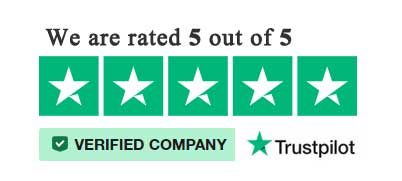Futures trading has long been an integral part of financial markets, providing a mechanism for price discovery and risk management. From its humble beginnings in the 19th century to the cutting-edge technologies of today, the evolution of futures trading is a testament to human ingenuity and adaptation. This comprehensive overview traces the development of futures trading and explores the impact of artificial intelligence (AI) on this dynamic field, offering insights for both career traders and beginners.
The Early Days: 1800s to Early 1900s
Futures trading began in the 19th century as a means to stabilize agricultural markets. Farmers and merchants sought ways to manage the risk of fluctuating prices for crops. The Chicago Board of Trade (CBOT), established in 1848, became the first organized futures exchange. It introduced standardized contracts for agricultural products, which significantly improved market liquidity and efficiency.
In the early days, futures trading was largely manual. Transactions were conducted through open outcry in trading pits, where traders would shout and use hand signals to communicate bids and offers. This system, while chaotic, laid the foundation for the formalized and regulated markets we see today.
Mid-20th Century: Technological Advancements
The mid-20th century saw significant advancements in technology and infrastructure that transformed futures trading. The introduction of telephones and telex systems enabled faster communication between traders and brokers. Additionally, the development of computer technology in the 1960s and 1970s brought about the first electronic trading platforms.
The launch of the Chicago Mercantile Exchange’s (CME) International Monetary Market (IMM) in 1972 marked the beginning of futures trading in financial instruments such as currencies and interest rates. This diversification beyond agricultural commodities expanded the scope and appeal of futures markets to a broader range of participants, including institutional investors.
The Digital Revolution: 1980s to Early 2000s
The 1980s and 1990s were transformative decades for futures trading, driven by the advent of digital technology. Electronic trading platforms like Globex, introduced by CME in 1992, allowed traders to execute transactions electronically, bypassing the need for physical trading floors. This shift dramatically increased market accessibility, efficiency, and speed.
With the rise of the internet, retail investors gained unprecedented access to futures markets. Online trading platforms emerged, providing individual traders with the tools and information necessary to participate in futures trading. This democratization of trading leveled the playing field, enabling more people to engage in futures markets from the comfort of their homes.
The Age of Artificial Intelligence: 2010s to Present
The 21st century has ushered in an era of rapid technological innovation, with artificial intelligence (AI) at the forefront. AI’s impact on futures trading has been profound, transforming how markets operate and how traders make decisions.
AI in Futures Trading: Key Developments
- Algorithmic Trading: AI-driven algorithms now execute a significant portion of futures trades. These algorithms analyze vast amounts of data at lightning speed, identifying trading opportunities and executing trades with minimal human intervention. High-frequency trading (HFT) is a notable example, where AI algorithms make split-second decisions to capitalize on market inefficiencies.
- Predictive Analytics: AI’s ability to process and analyze large datasets has revolutionized market analysis. Predictive analytics tools powered by machine learning can forecast price movements and identify trends based on historical data and real-time market information. This capability provides traders with valuable insights to inform their strategies.
- Sentiment Analysis: AI algorithms can analyze news articles, social media posts, and other text-based data to gauge market sentiment. By understanding the collective mood and opinions of market participants, traders can make more informed decisions and anticipate market movements.
- Risk Management: AI enhances risk management by identifying potential threats and anomalies in trading patterns. Machine learning models can detect unusual trading activity and alert traders to potential risks, helping them make more informed decisions and protect their investments.
- Robo-Advisors: AI-powered robo-advisors offer personalized investment advice and portfolio management services. These platforms use AI algorithms to assess individual risk tolerance, investment goals, and market conditions, providing tailored recommendations for futures trading.
What Traders Need to Know Today
1. Embrace Technology:
Both career traders and beginners must recognize the importance of technology in modern futures trading. Understanding and utilizing advanced trading platforms and AI tools can provide a competitive edge. Familiarity with algorithmic trading, predictive analytics, and sentiment analysis is essential for staying ahead in the market.
2. Continuous Learning:
The futures market is dynamic and constantly evolving. Traders need to stay updated with the latest developments, trends, and technological advancements. Continuous learning through courses, webinars, and industry publications is crucial for maintaining a competitive edge.
3. Risk Management:
Effective risk management is critical in futures trading. AI tools can assist in identifying and mitigating risks, but traders must also develop a robust risk management strategy. This includes setting stop-loss orders, diversifying portfolios, and regularly reviewing and adjusting trading strategies.
4. Regulatory Compliance:
Regulatory compliance is paramount in futures trading. Traders must stay informed about regulatory changes and ensure their trading practices adhere to legal requirements. This includes understanding margin requirements, position limits, and reporting obligations.
5. Choose the Right Platform:
Selecting the best platform for futures trading is crucial. Traders should look for platforms that offer robust features, including advanced charting tools, real-time data feeds, AI-driven analytics, and a user-friendly interface. Reliability, security, and customer support are also important considerations.
Futures trading has evolved significantly from its origins in the 1800s, driven by technological advancements and the rise of artificial intelligence. Today, traders have access to sophisticated tools and platforms that enhance their trading strategies and decision-making processes. Embracing technology, continuous learning, effective risk management, regulatory compliance, and choosing the right trading platform are essential for success in the modern futures market.
As AI continues to advance, the future of futures trading promises even greater innovation and opportunities. Traders who adapt to these changes and leverage the power of AI will be well-positioned to thrive in this dynamic and ever-evolving field.
Ready to start trading futures? Call US 1(800)454-9572 – Int’l (310)859-9572 email info@cannontrading.com and speak to one of our experienced, Series-3 licensed futures brokers and start your futures trading journey with E-Futures.com today.
Disclaimer – Trading Futures, Options on Futures, and retail off-exchange foreign currency transactions involves substantial risk of loss and is not suitable for all investors. Past performance is not indicative of future results. You should carefully consider whether trading is suitable for you in light of your circumstances, knowledge, and financial resources. You may lose all or more of your initial investment. Opinions, market data, and recommendations are subject to change at any time.
Important: Trading commodity futures and options involves a substantial risk of loss. The recommendations contained in this writing are of opinion only and do not guarantee any profits. This writing is for educational purposes. Past performances are not necessarily indicative of future results.
**This article has been generated with the help of AI Technology. It has been modified from the original draft for accuracy and compliance.
***@cannontrading on all socials.









